Everything you do when fox calling, you’ll do while hunting other predators, like bobcats and coyotes. Scouting, playing the wind, running scanning lights—it’s all essential training for a predator hunter.
But there are more fox out there, and they require fewer tools and equipment to call in. This makes fox the perfect predator to practice on. Calling in a fox isn’t easy, but you can rapidly develop the skills necessary to do it.
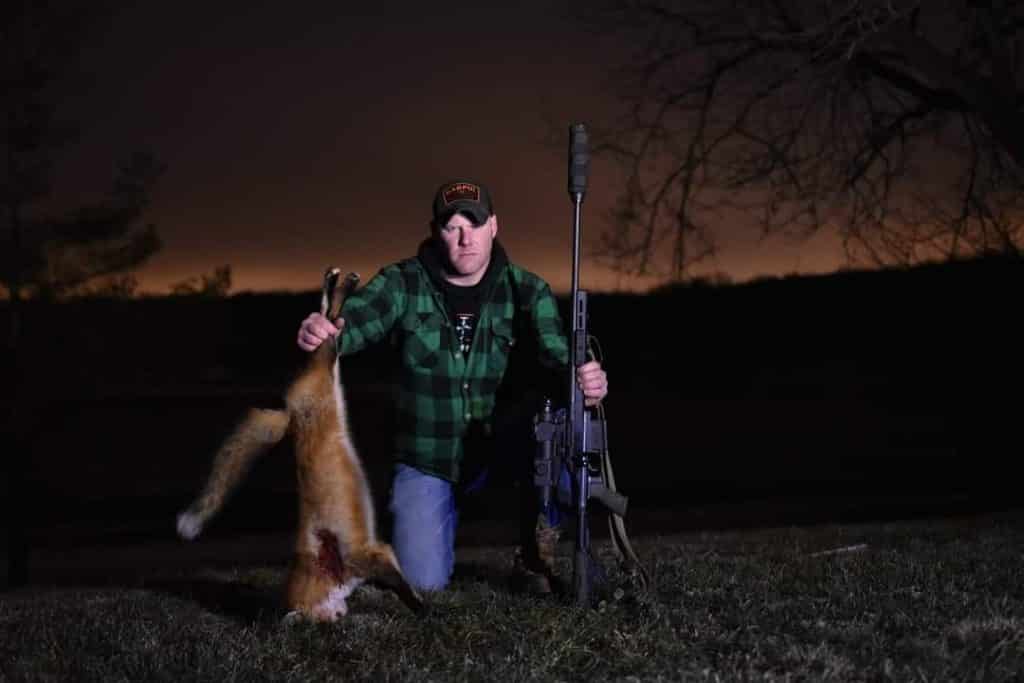
Start cheap, start with fox calling.
Fox hunting is by far the least expensive form of predator hunting. Let me qualify that further by saying you should limit your spending to less than $100 for your entire first season.
If this is your second season, I recommend checking out Rushcustomcallers.com. Brian Rush makes one hell of an affordable and lifetime closed reed caller that can bring a fox within bow range.
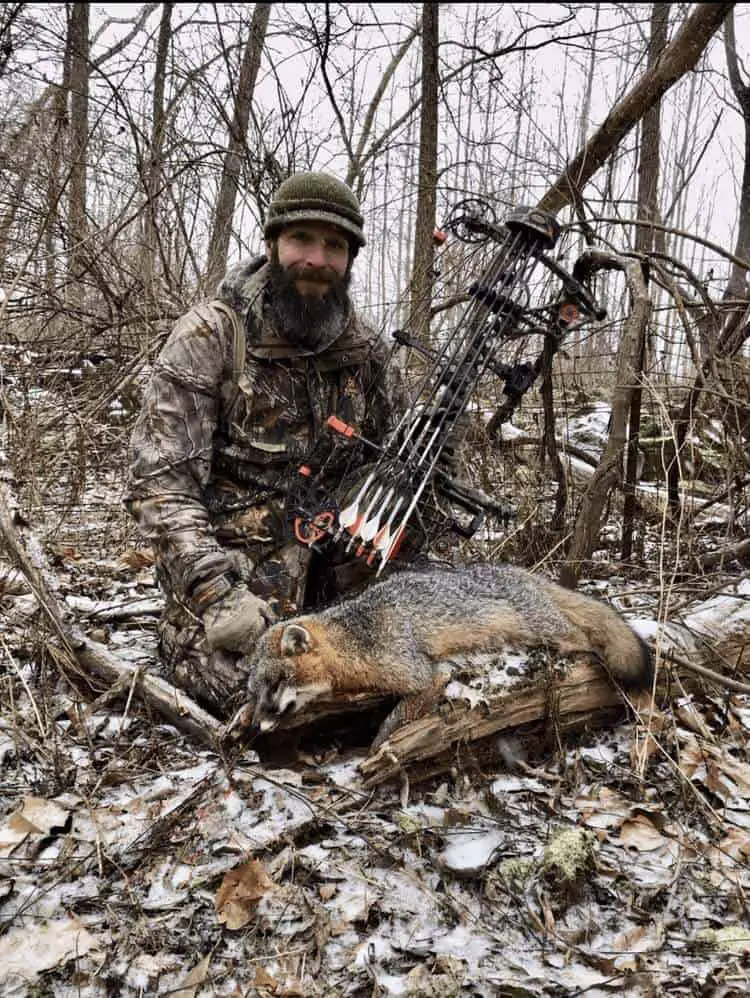
Fox hunting is also the perfect after-work activity. Work all day, have dinner with the family, and spend an hour or two enjoying the great outdoors. You’ll get some fresh air, a bit of exercise, and maybe even a dose of that caveman adrenaline that once pumped through your ancestor’s hearts.
Don’t forget to bring the spouse and kids! You may all miss two or three television programs, but you’ll have a great time together.
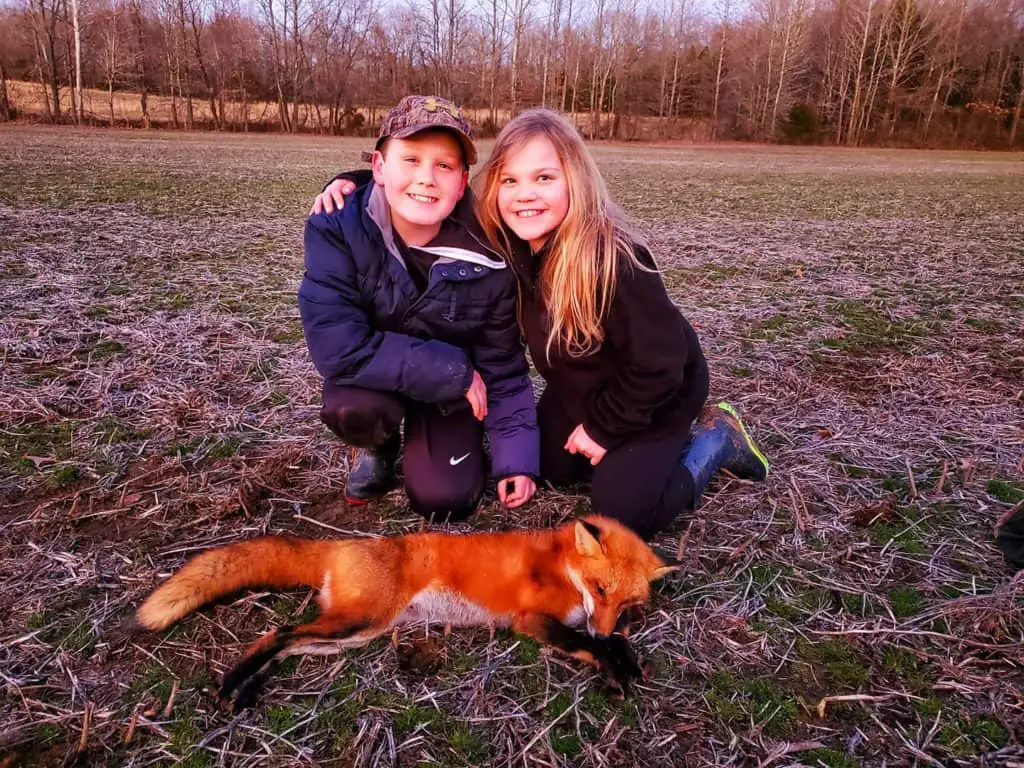
How to call a fox on the cheap.
If you already have an old .22 caliber rifle or a 12 gauge shotgun, you’ve got all the firepower you’ll require. Now all you need is a red scanning light and a simple hand caller.
Here’s a light that, for under $50, is actually a bit better than you’ll ever need.
With your remaining $50, please purchase the only two callers you’ll need. Both are very simple to use and require just a few minutes of practice at home.
The first is a Primos Mouse Squeeze Call (hereafter the Primos or Primos bulb).
The second is the DWO Signature Series rabbit squealer/distress call.
Related: How-to-master-the-best-closed-reed-coyote-call/
Author’s note: I get a small commission (at no extra charge to you) if you use one of my Amazon links to make a purchase. On the other hand, if you buy something from https://rushcustomcallers.com/, I do not get a penny. Nevertheless, please do yourself a favor and buy your closed reed call from them.
It is impossible to overstate the success rate new predator hunters have when calling fox. Predator hunters have widely ignored foxes. And many foxes have grown fat while daylight raiding farms for chickens and ducks. If you call after dark (and after properly scouting), expect some fantastic results.
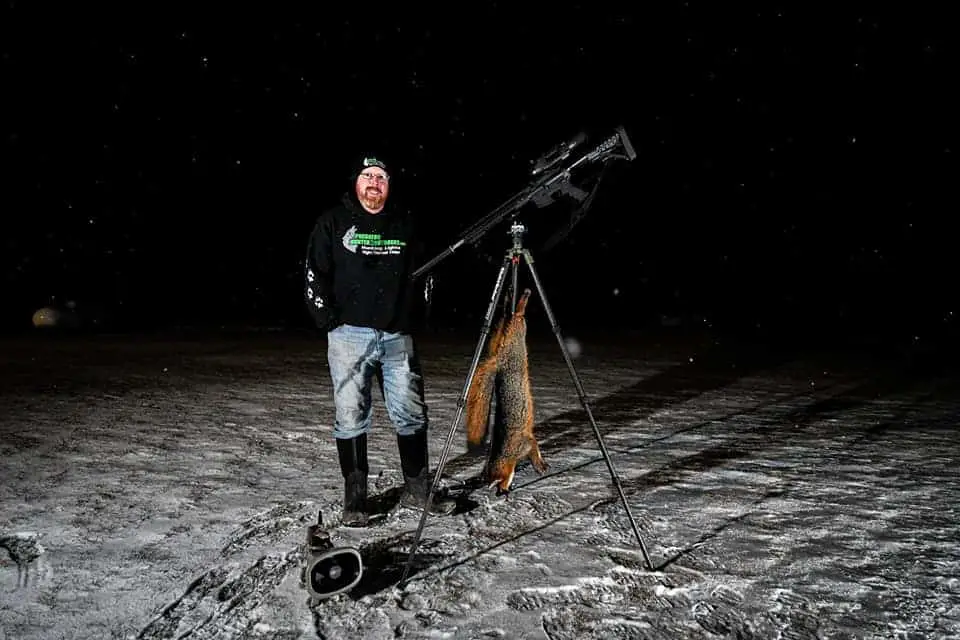
Related: https://thepredatorhunter.com/powerful-tips-for-detecting-fox-dens/
Related:https://thepredatorhunter.com/finding-fox-a-simple-guide-to-success/
Think like a fox when you are fox calling.
Before you head out into the woods, take a minute and learn a few critical facts that make the fox an utterly different predator from any others. Knowing these facts will be important when you start calling fox.
- A fox doesn’t eat everything it kills. A fox will spend the night pouncing, killing, and examining everything it catches but won’t always eat it. Some researchers believe this means that all foxes engage in an “element of sport.” Others have likened it to natural curiosity.
2. Fox eat mostly at night. Researchers have proven that fox weigh more at daybreak than at sunset.
3. Fox don’t chew their food. Instead, they tear off just enough food to swallow it whole. This has allowed researchers to collect and accurately identify the stomach contents of all types of the fox.
4. Fox cache their extra food. A too-large meal will be broken up into groups of a few mouthfuls and buried, marked, and returned to over the next few days. These caches are all located well within a fox’s home territory.
These four behaviors can help you develop a reliable strategy for fox hunting based on scientific research.
Hunt fox at just after dark (2), within a fox’s territory (4), using calls that mimic its usual prey (3), or tease its natural curiosity (1).
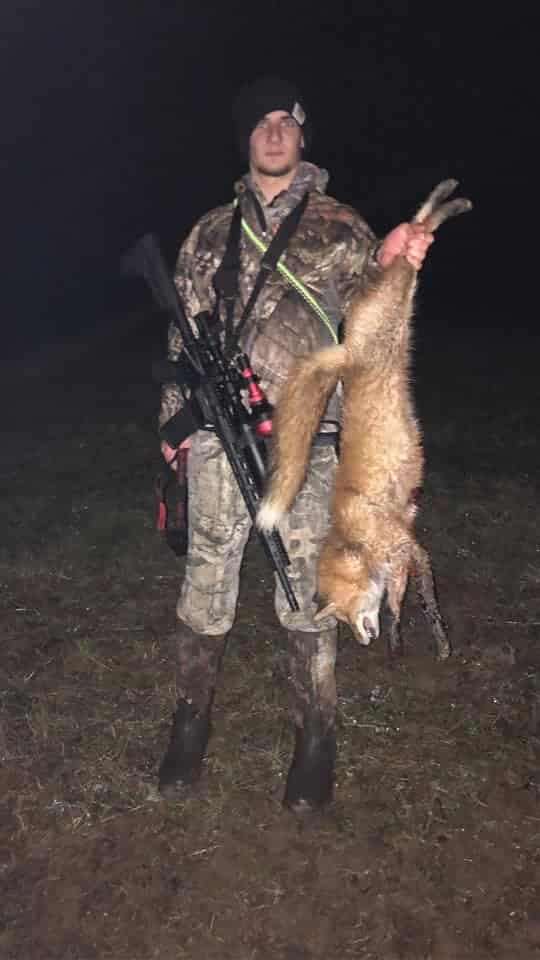
Where you can get started calling fox.
Remember, your success depends first upon finding areas that provide a suitable habitat for fox, and then on gaining permission to hunt as much property as possible.
Access to as many areas of suitable hunting land is critical to your success. Do not skip this step!
Hunting fox on public land.
Start with public land. Believe it or not, more than 25% (640 million acres) of all the land in the United States is public land. According to the Bureau of Land Management:
“Today, there are 76 areas managed by the National Park Service, 336 national wildlife refuges and 36 wetland management districts managed by the U.S. Fish and Wildlife Service, and over 220 million acres of BLM-managed public lands — in addition to most Bureau of Reclamation lands — that allow hunting in accordance with federal and state regulations and laws.”
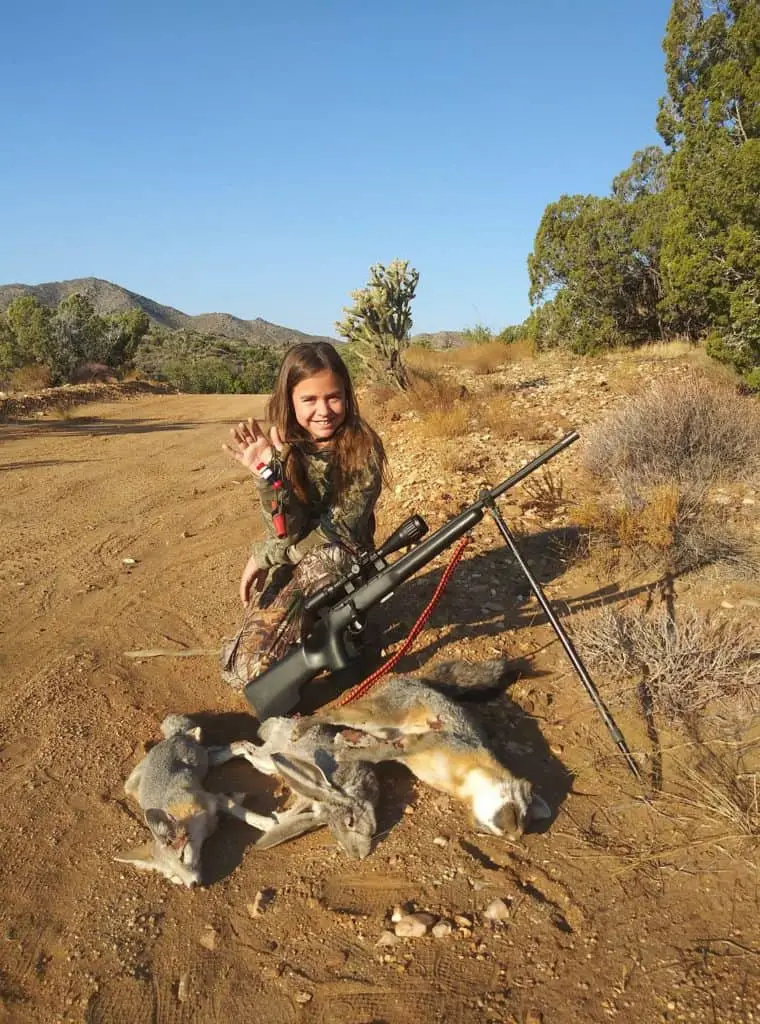
Hunting fox on farm land.
Interesting fact: Some farmers like coyotes (they kill deer that harm their crops), but most farmers hate foxes (they dig insects out of gardens and kill ducks and chickens).
Please introduce yourself to local farmers by waving when you drive by, buying vegetables from them, and grabbing a dozen eggs whenever you are in the area. At some point, you are a customer. Customers can ask questions. “Do you have a problem with foxes killing your livestock?”
When you seek permission from a farmer, take a bit of advice from a farmer (me!), do it before the fur season begins, dress in regular clothes, and clearly state, “After deer season.”
Safely kill a few foxes for me, and I will ask you if you can kill some coyotes for me. If deer are bothering my crops, I might even ask you if you’d like to deer hunt my land.
Oh, yes! Lots of others will have asked before you did. They came with the snow, dressed in camo, and most had a rifle slung over their shoulder or propped up on the seat of their pickup truck. I send yahoos packing.
BTW: All farmland is fox habitat.
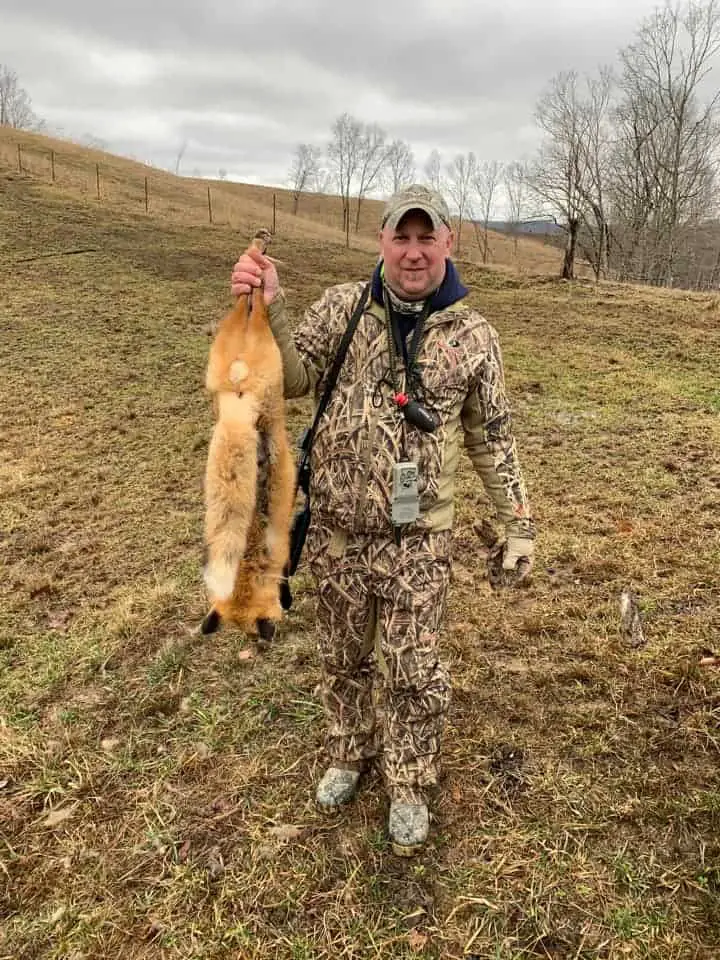
Calling fox means sounding like real prey.
A fox is always listening. But what sounds will make it curious, hungry, or angry enough to come to you?
Sounds of grounded and wounded prey.
A dying bird or rabbit makes faint, desperate sounds. The volume will be nearly too low for you to hear, but to the fox, that sound and the message it sends will be loud and clear—a free meal, nearly dead, and laying on the ground.
Your first fox calling sequence should be made using prey in distress at an unbelievably low volume at every stand. An initial low volume sound will prevent an unseen and close-by fox from being startled and running off.
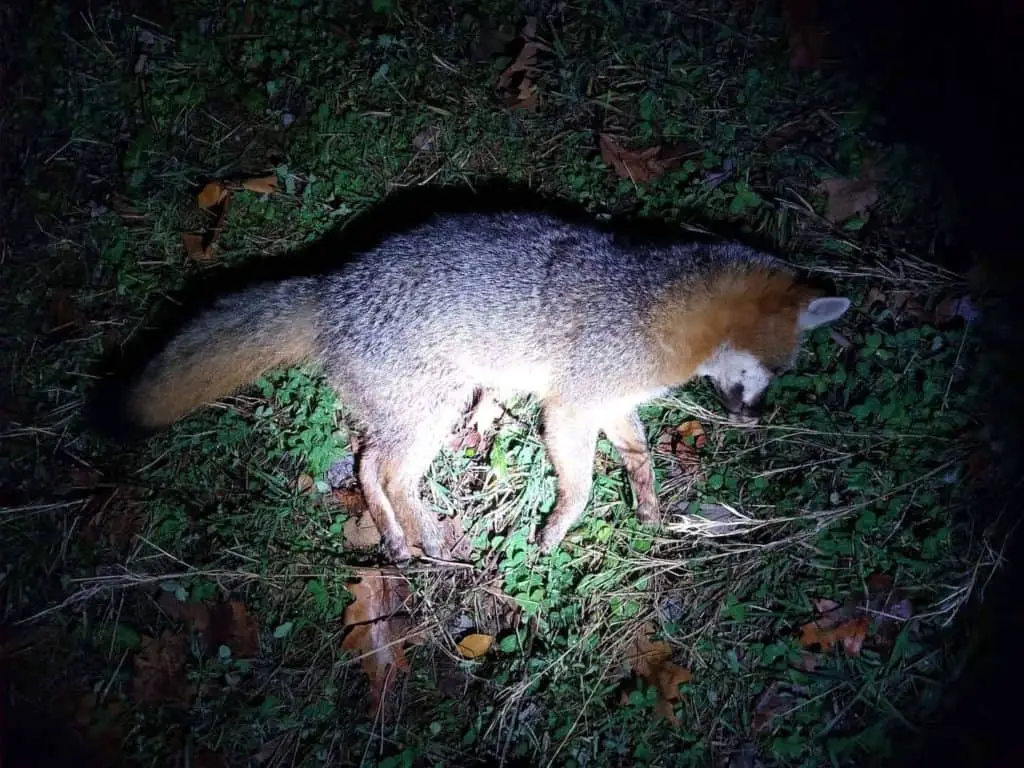
Low volume distress sounds tell the fox no competitor is awaiting them. If there was a fight, it’s over, and the victor has left the prize adrift. In other words, low volume distress means it’s a free meal.
Mimicking dying prey means making frequent long and short, low pitched sounds punctuated with high pitched but brief squeals.
The sounds of struggle.
A struggle can come in several forms:
- Prey resisting an attacker (a rabbit warding off a stout).
- Prey attempting to escape capture (a rodent caught in an owl’s talons).
- Prey caught in a physical trap (a snowshoe hare caught on barbed wire.
- A fight (young raccoons playing or kits (young fox) being attacked in their den).

A struggle is not a quiet event. The volume, like the stakes, is high. Humans have four options when attacked (fight, flee, posture, or submit), but prey have only two (fight or flight), and both result in loud snarls and screams of pain and fear.
If you live in the woods (like the author), these sounds are not frequent, but they are loud and memorable. Their length is astounding and pitiful, and no creature surrenders quietly, and few die suddenly. An actual struggle is often noisy and long enough for a human to locate. The fox instantly knows the precise location.
Mimic a struggle with booming, harsh calls. Try to sound like an unhinged lunatic fighting for your life. Raise and lower your tone, go quiet for a few minutes, and then hammer that caller with fractured, cut-off sounds of pain, fear, and agony. Every predator goes for the throat, even weasels, short bouts of silence typically follow.
These noisy peals of desperation will catch a fox’s ear and bring it into range.
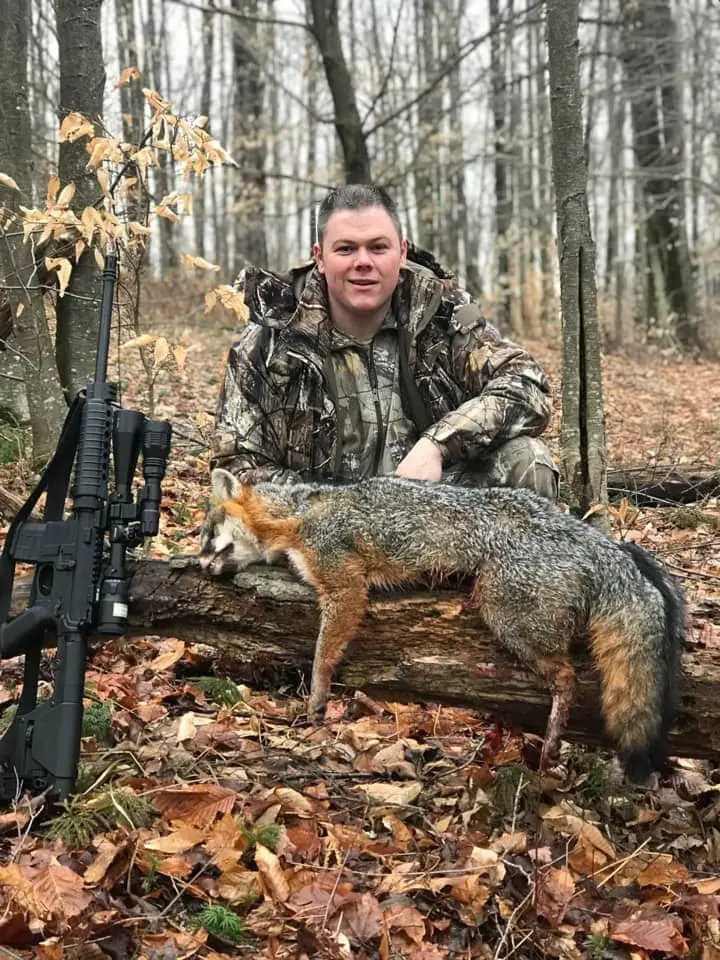
Thinking about calling fox during mating season?
Unless you are a farmer protecting your fowl, you should be hunting fox during prime fur season. This typically coincides with the red and gray fox mating season.
For most of the United States, this roughly six-week-long period occurs between December and March. The temptation here is to use fox vocalizations (rather than struggle and wounded prey) to lure in an unattached fox looking for a mate.
By all means, go ahead and try it. I, however, have never had any luck and would recommend you avoid this technique—certainly don’t spend any extra money on coyote mating sounds. About halfway through the mating season, I typically have a 10-14 day stretch where no fox will respond to any fox vocalization calls.
I certainly hear the high-pitched female screams during mating season, but they seem to be nothing more than “here I am” info. I can’t get them to come closer, and males may respond but don’t approach me when I use them.
I’ve come to believe foxes spend a long time introducing themselves to each other. They may spend a month or more saying hello. So my advice, stick to struggle and wounded prey, even during mating season.
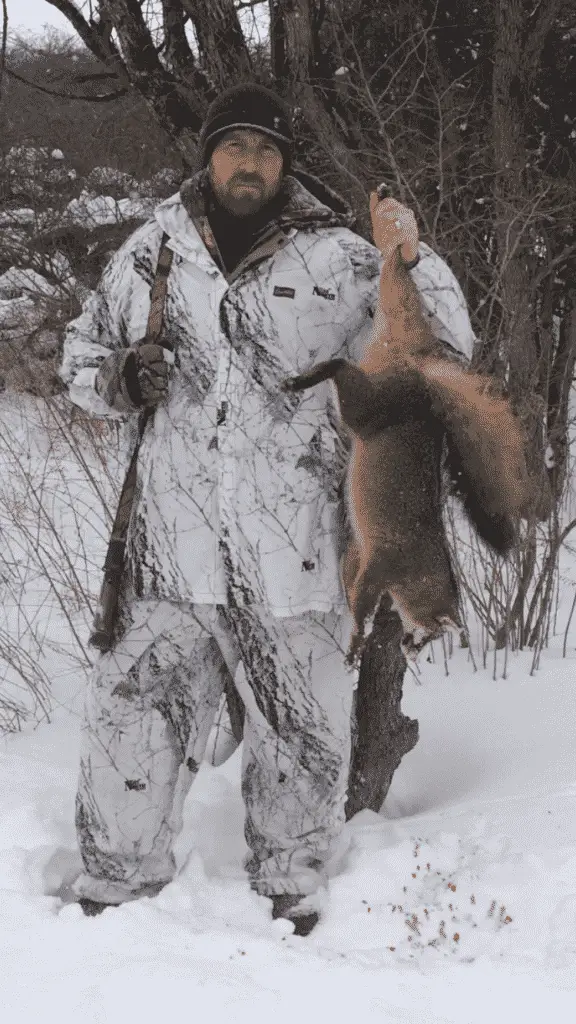
Fox calling equipment.
Believe it or not, there was a time when predator hunters carried record players and speakers afield, but today our fox calling equipment is a lot lighter, less fragile, and more versatile.
In the United States, there are four types of fox callers; mouse squeakers, hand callers, mouth callers, and electronic callers. Which one is the best is the subject of a great deal of debate, but each has some definite pros and cons.
Mouse Squeakers
At less than $15 and requiring only a few minutes of training, mouse squeakers are perfect for new and advanced fox hunters. Properly used, mouse squeakers produce realistic field mouse and rodent sounds that even a novice can reliably repeat in all weather conditions.
After some dedicated practice, you can use a mouse squeaker to add genuine emotion to a call. For example, switching rapidly from hard and fast to slow and soft squeezes, a fox hunter can sound like a terrified, wounded mouse—just what a fox wants for dinner.
Mouse squeakers weigh less than an ounce, fit in your pocket, and can be used to stop any predator before taking a shot.
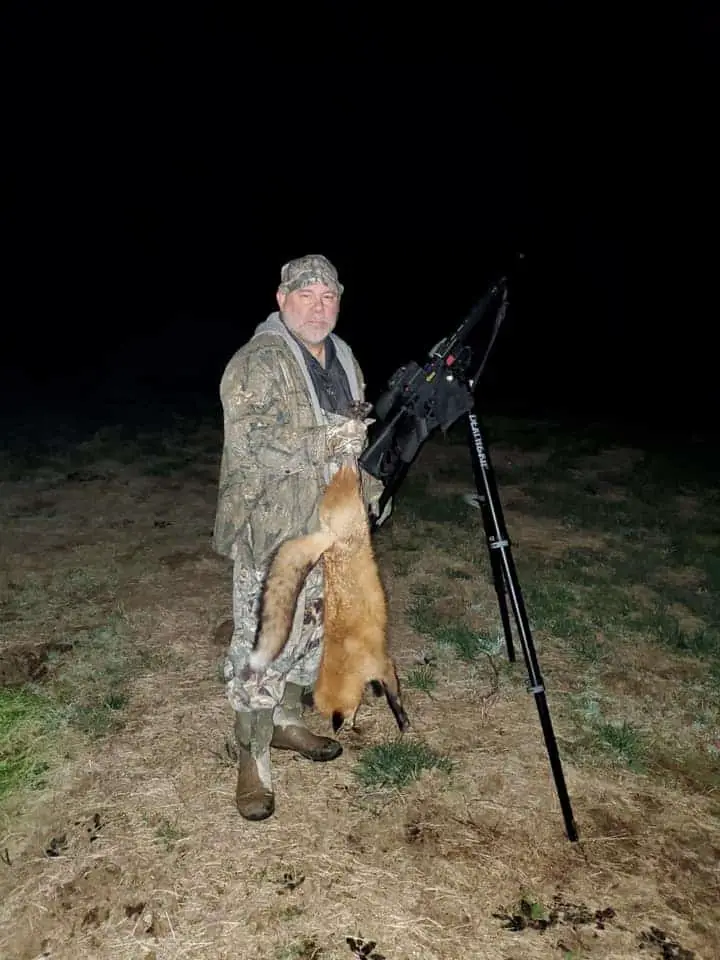
Cons of fox calling with mouse squeakers.
The biggest problem with a mouse squeaker is its volume. A fox has incredible hearing; it can hear a mouse (under snow) up to 100 feet away. But, unfortunately, a poorly used mouse squeaker can sound like a 100-pound rat.
Another downside to mouse squeakers is the lack of variety. Squeakers are strictly prey calls. Though highly effective, they are too easy to use, monotonous to listen to, and downright dull for many fox hunters.
Hand callers.
For a few dollars more and some “windshield time” spent practicing, hand callers offer a fox hunter a wide variety of unique sounds and the instant ability to change calls as the fox responds.
Hand callers come in two types: the reed enclosed (closed) and one with the reed exposed (open).
Closed reed callers.
The closed reed call is easily mastered and provides a realistic sound that imitates rabbits in distress. Even in the hands of new predator hunters, a closed reed call be used to lure a fox into range the first night the use it.
Cons of calling fox with closed reed callers.
Like mouse squeakers, closed reed callers can only mimic prey in distress sounds.
Open reed callers.
An open reed can produce an incredible number of animal noises and distress sounds. By changing the position of their tongue, lips, and teeth, a hunter can quickly cycle from a rabbit in distress to a barking fox.
Cons of fox calling with open reed callers.
The open reed call requires lots of practice. Those who learn to master it swear by it, but those who don’t swear at it.
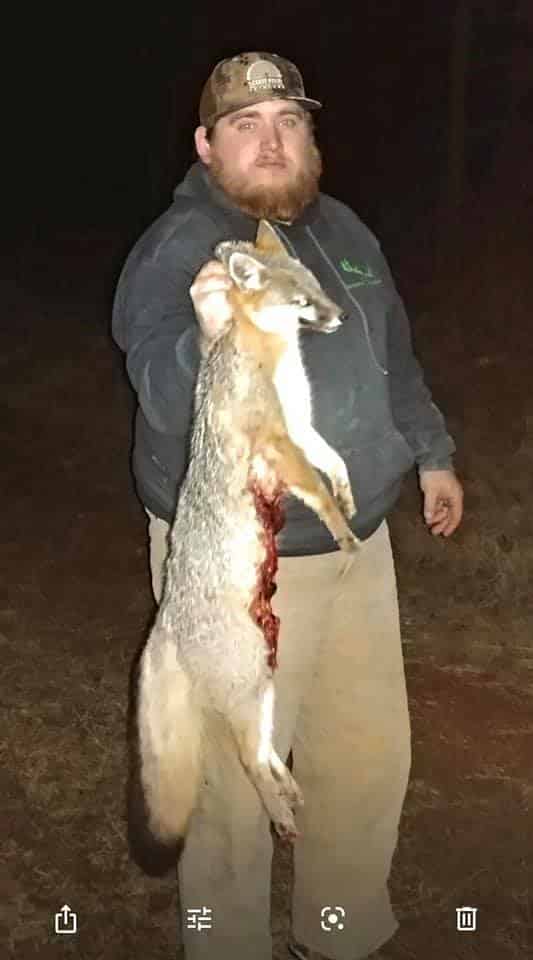
Mouth Callers.
At under $10 apiece, a diaphragm call is another cheap call that slips nicely into a jacket pocket. Diaphragm calls are nothing more than horseshoe-shaped wedges of plastic holding a latex-covered reed. Inserted inside the mouth, a hunter blows air from the roof of their mouth across the reed.
Mouth callers make excellent prey in distress sounds, like rabbits and birds, all while keeping both hands free.
Cons of calling fox with mouth callers.
You can expect to deal with a gag reflex and some mouth irritation when first getting started. There’s also the level of practice required; weeks for some and a month or more for others.
Electronic callers.
As a new predator hunter, you are going to sorely tempted to skip all the learning curves and simply plunk down a fist full of dollars for an electronic caller.
Chance are excellent that, if it’s over $300, you’ll get one that is reliable and produces compelling sounds that travel hundreds of yards.
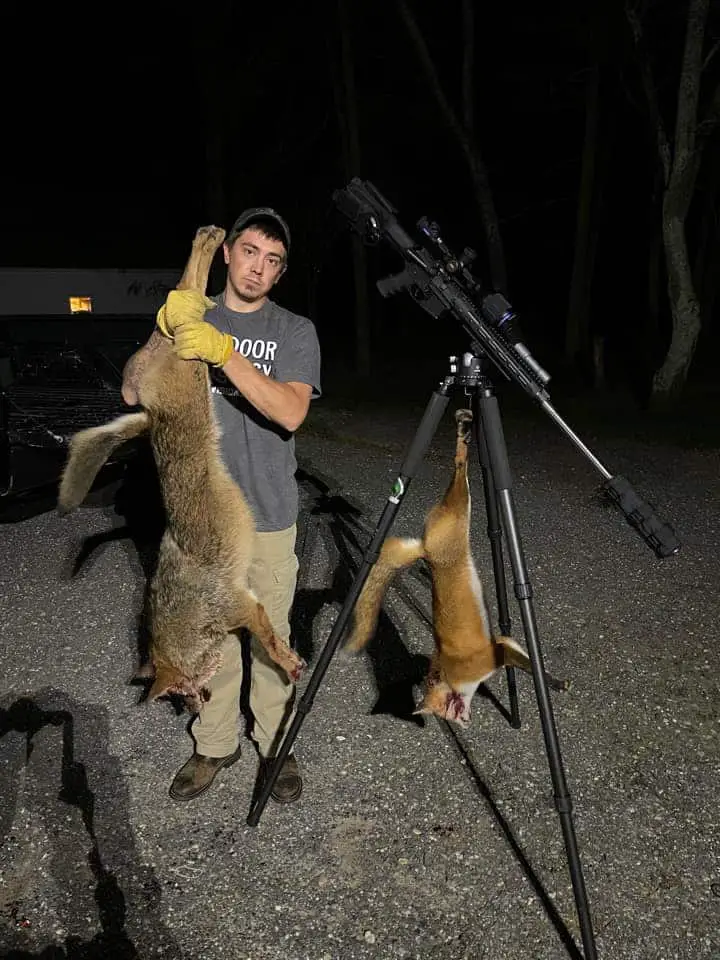
You’ll bring in fox with an electronic caller. Then, when you hunt other predators, there will be dozens of pitch-perfect calls ready for you to use. It appears that, at first glance, there is no downside to beginning your predator hunting hobby by buying and using an electronic caller.
Cons of electronic callers.
Electronic callers are expensive. Don’t buy one for less than $300–you’ll get a piece of crap that sounds terrible and quickly dies when exposed to real-world conditions.
You’ll learn very little about the actual sport of predator hunting. You are in the field to outwit nature’s perfect killing machines. If you rely 100% on a box of wires to call in every fox, why not just wait until FoxPro creates a robot that carries your gun, drives to the woods, and shots them for you? Hell, you are already halfway there as it is.
Complexity increases the odds of failure in the field. Dead batteries, remotes refuse to connect, and speakers crack in the cold. You cannot always find the remote in the dark and sometimes drop critical parts in the snow and never find them again. You must program it correctly, or you’ll send out the wrong call and at the wrong volume.
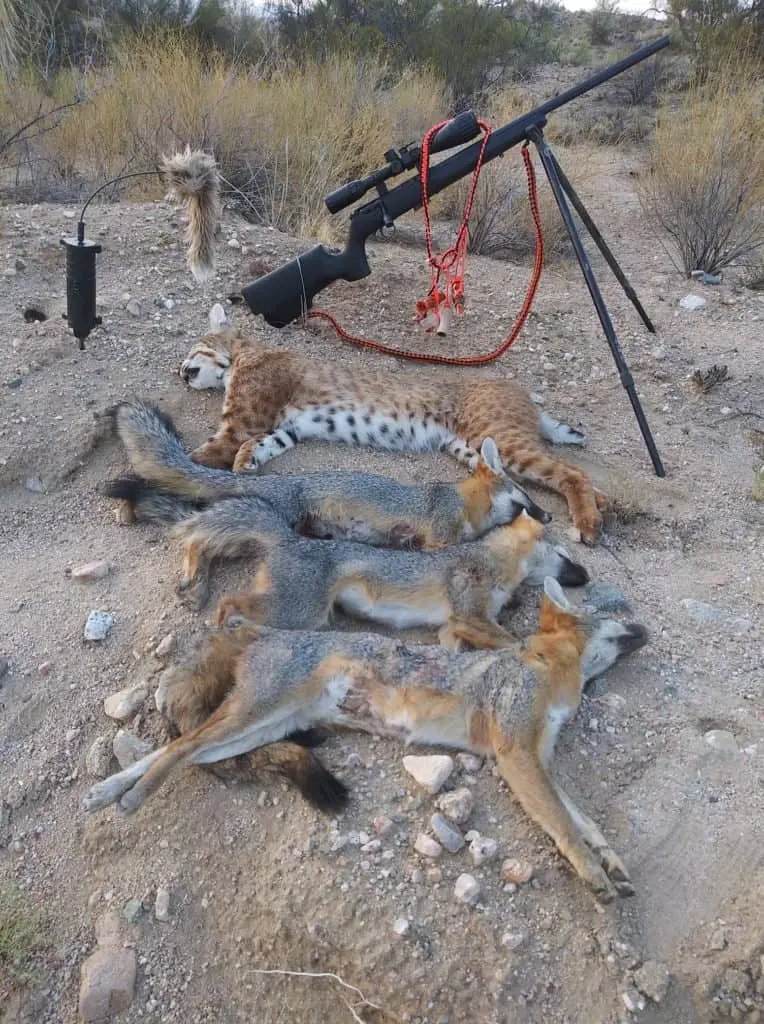
Look, I’m not against using electronic callers, but the “pro” who insists new predator hunters should start out with one? That guy, he’s selling you one.
You’re going to buy an electronic caller, aren’t you?
Well, with nearly every fox hunter who submitted a photo for this article using one, who can blame you. Based solely on those submission, here’s the most popular callers and their current costs.
Let the buyer beware!
Calling fox? Which one?
There are five types of foxes in the United States. However, this article focuses on only two; Reds and Grays.
I could tell you I limited it to two to keep this article short enough to maintain your attention. On the other hand, I could claim I’m using just these two because at least one of the two will reside in the state you hunt.
The truth is; however, I am only an expert in Red and Grays. I wouldn’t know an Arctic Fox from an Arctic Cat snowmobile.
I am, however, an expert at night hunting foxes and coyotes.
Red Fox vs Gray Fox.
Appearance.
Telling a red fox from a gray fox is easy. Red fox (even if seen through infrared scopes) have black socks, black-tipped tails, and tend to have red (or reddish) bodies. At night, it’s always the socks that aid in easy identification.
Gray foxes are easy to identify as well. However, during the day, they are invisible. The human eye cannot detect a gray fox if the sun is still up. No, seriously, Gray foxes move only at night. Most new fox hunters have never seen one before and find themselves standing over a dead gray fox and wonder, “What law did I just break?”
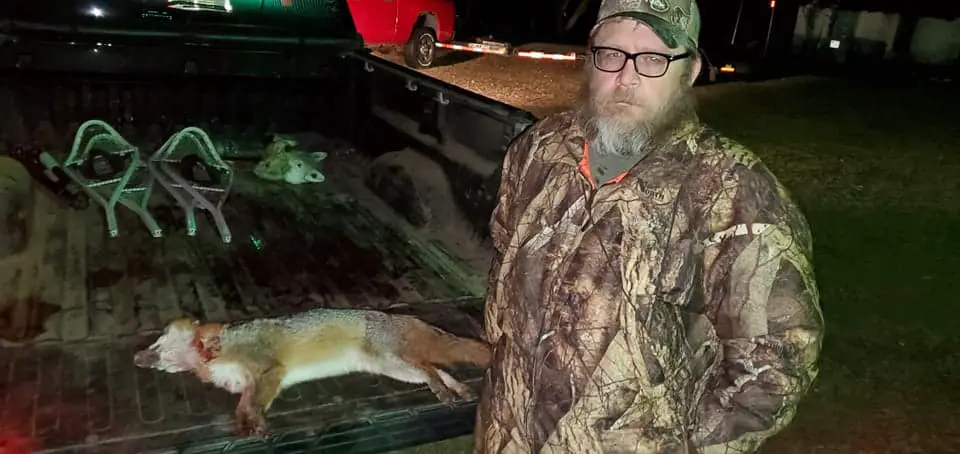
Mating and territorial sounds for red and gray fox calling.
Before you invest in any specific mating or territorial sounds for fox (assuming you skipped over what I said earlier), here’s a tip: Don’t.
The truth is, a fox will nearly always come to prey in distress calls. If they don’t, they aren’t within hearing range of your call. I’ve never had one come to a mating call or a stranger barking on their land. Sadly, they are not coyotes, and they don’t respond like coyotes.
Having said all that, however, they will respond to one other call; a fox kit (baby) in distress. Both red and grays seem genetically inclined to charge recklessly into a kit fox distress call. Gray pup works best, with red pup a close second.
Yes, a red fox will come to a gray kit fox distress call, but I can’t say for sure if it’s to protect—or to feed.
If you observe a fox skirting the edges of your stand and cannot get it to commit to your call, switch to a kit in distress and watch it arrow in toward you like a heat-seeking missile.
Works every time. Well, for me, anyway.
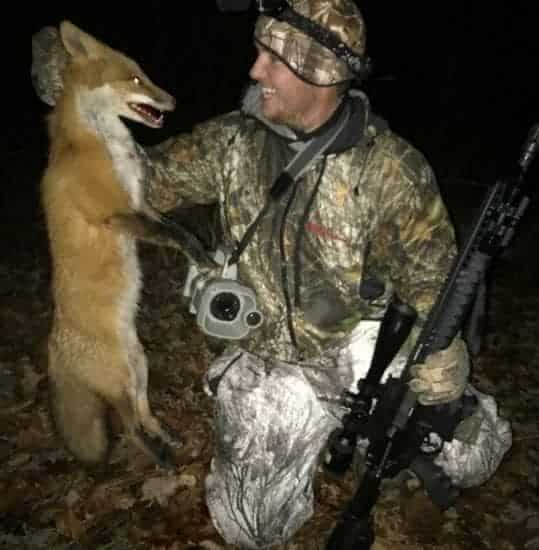
Where can you always find red and gray fox?
Gray fox habitat.
Gray foxes move only at night and love to stick to thick cover. Overgrown fields bordered by streams and rivers are the absolute best hunting spots. In the woods, look for dense hardwood trees or areas with a mix of hard and softwood growth.
A gray fox will not stand in the middle of a mowed field for you (like a red fox will), but a good fox hunter will find that, in the right habitat, a gray can be taken at extremely close range with nothing heavier than a .22.
Those who take a gray fox should continue to call and remain on stand for as long as possible. Gray foxes typically travel in mated pairs. If you do not score a second fox that evening, return the next day, if possible. The next gray fox you take will likely be the opposite sex.
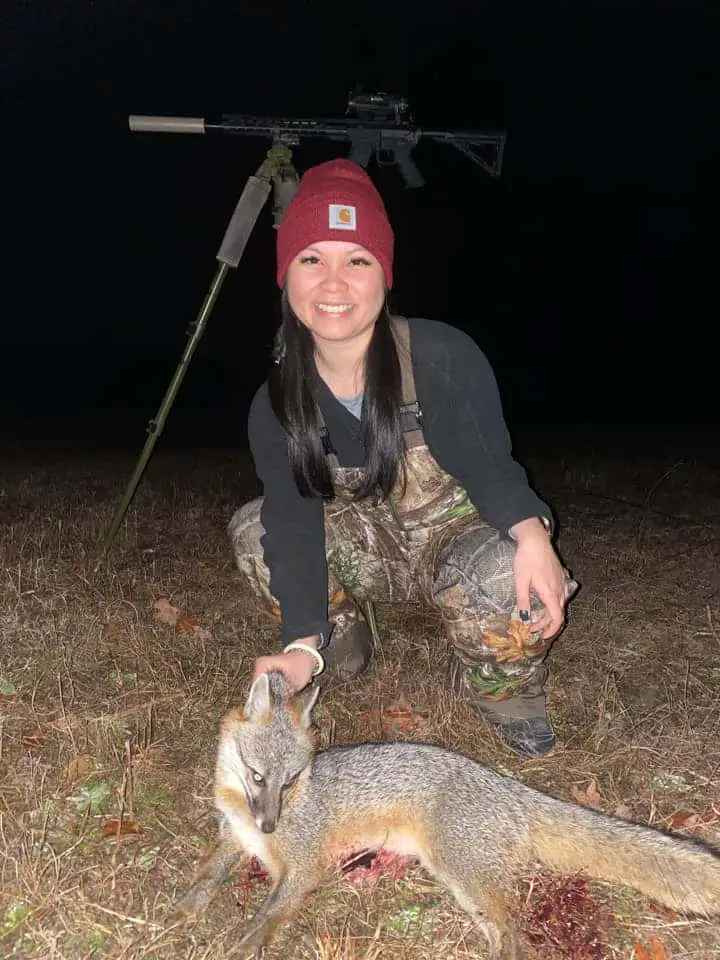
Red fox habitat.
Red foxes seem to adore a freshly mowed field. If that field has stream through it, too, call it, and you’ll take a red fox.
Other prime red fox habitats are recently harvested croplands and open wood lots. Basically, anywhere mice and voles would find food and a warm place to nest and breed.
Look for ground nesting birds.
While most of us tend to favor the rabbit in distress when calling, foxes wreak havoc on ground-nesting birds. Game birds like turkey and pheasant place their nests in tiny depressions on the ground, and these nests are easily identified by the grass and feathers used to line them.
Even if you cannot make a convincing turkey or pheasant sound, locating their nests increases the odds a fox will be nearby.
If you can’t locate a ground nest, look for a body of water such as a pond within a field or adjacent to a wood lot. Ducks and geese may spend the day on dry ground, but they will always keep their young close to the water’s edge to escort the young away from a fox or coyote safely.
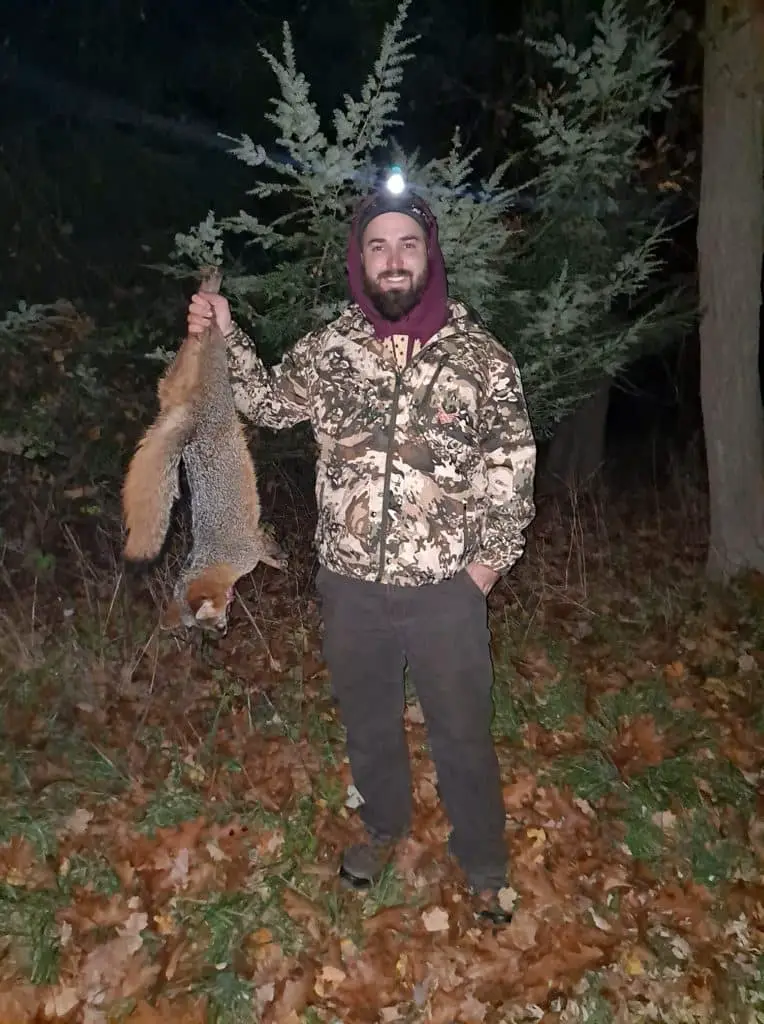
The best sequences to use when calling any fox.
By “best,” I mean the most straightforward system to remember, using the least expensive equipment. A Primos mouse Squeeze and closed reed caller are all that’s required to create the following sequences.
A few ground rules when calling fox.
- Due to their strictly nocturnal activity, the daytime calling of gray fox is not recommended.
- During the daytime, the use of a decoy is especially helpful. This will help conceal the movement of your hands while calling.
- While this calling sequence uses only a squeeze build and reed calls, feel free to use an electronic caller if you have one.
Pro tip: Always think in terms of creating a scenario. Your scenarios must mimic what would be heard in nature. As you make each call try to visualize the scene you are depicting. Add emotion, periods of silence, and vary your tone and volume up and down.
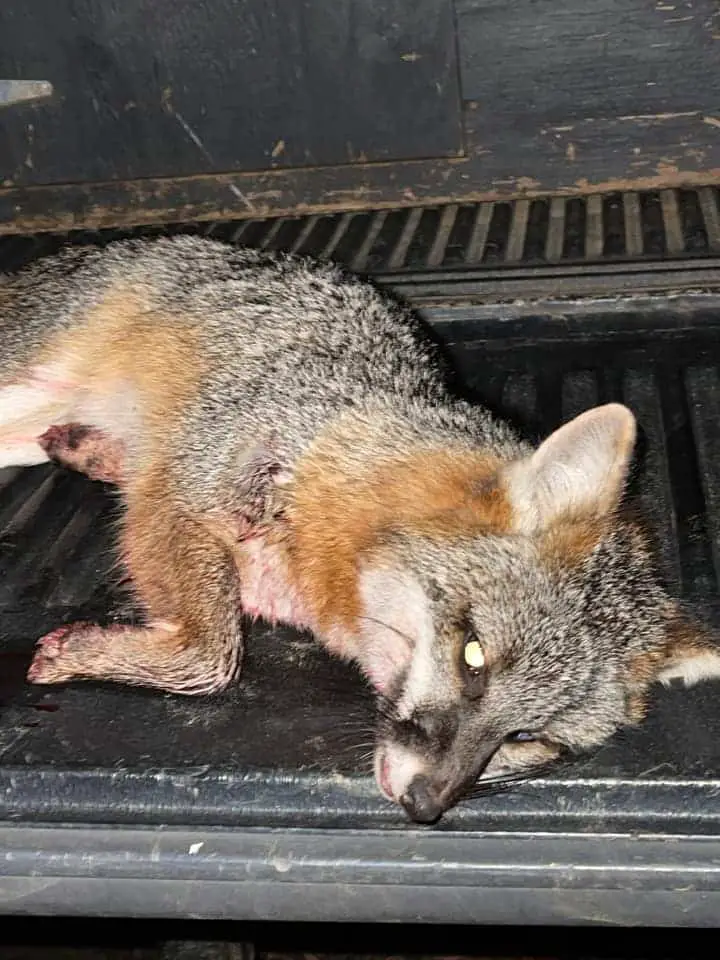
Plan on fox calling for 20 minutes, unless…
Fox, especially gray fox, respond much faster than coyotes. So, for the most part, anything over 20 minutes per stand is a waste of your time.
But there is one caveat: If you shoot a fox, restart your sequence and rest your clock for another 15-20 minutes. As noted above, grays travel in pairs, and reds often keep their mates nearby.
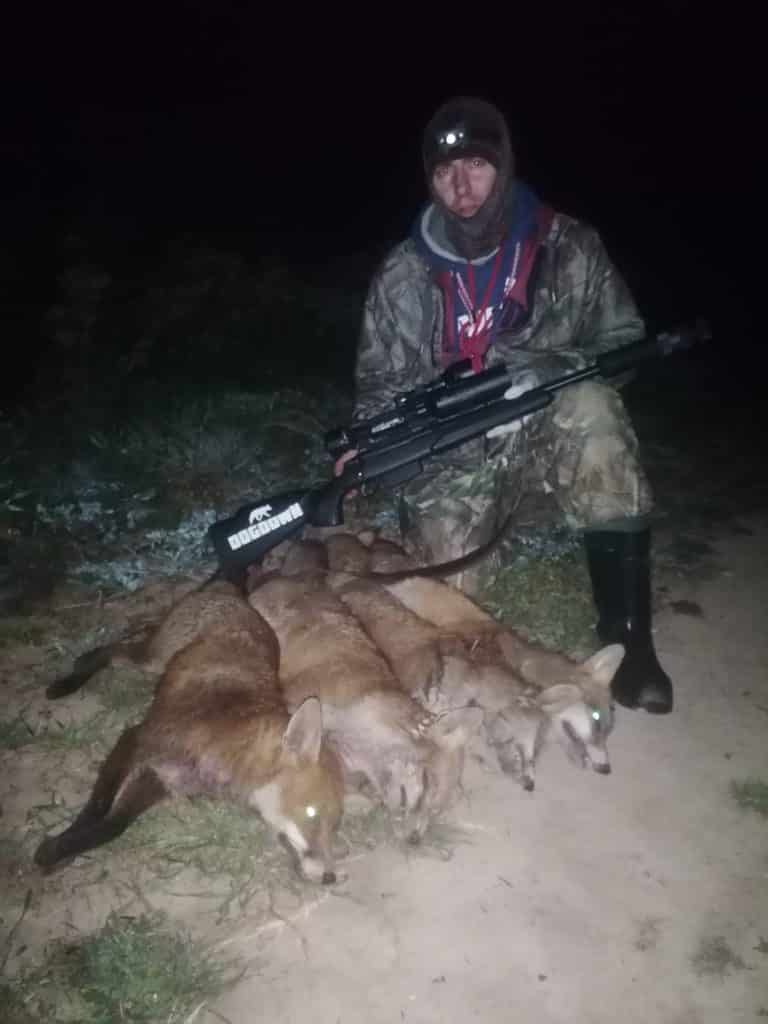
Always start with a low volume rodent in distress when calling fox.
While you may be targeting fox, it’s best, to begin with, a call that appeals to all predators. Small rodents like mice and voles constitute a significant part of even the largest predator’s diet. The benefit is that even at medium volume, the rodent in distress call won’t frighten off an unseen predator only a few yards from your caller.
I like to use a primos mouse squeeze to begin every stand. A few quick taps and a quick scan of the red light will instantly pick out any eyes that have turned to fix my location.
Call for a minute, scan for a minute, and repeat.
With your Primos in hand, start sending out an ever-changing series of pathetic, desperate, and varying speed cries. First, pump the Primos hard and fast to create short, loud shrieks. Then, slowly squeeze the bulb to create long pitiful moans.
With a bit of windshield time before your first stand, you will be able to master this technique quickly. Don’t be surprised when you find yourself getting into the mood when using this technique on a stand. The more physically involved you are when calling, the more exciting it is to hunt fox.

Pro tip: Be prepared for any predators to respond and carefully identify any “eyes” that appear. In addition, you must know every furbearer’s season for your hunting area. If, for instance, a bobcat appears, you’ll need to know ahead of time if it’s a legal target. And bobcats, though much slower in responding, will come to a Primos caller.
Stick to the Primos bulb for the first half of your stand before switching to a rabbit distress call on your closed reed caller.
Again, call for one minute. Work as much stress and emotion into the call as possible. During your minute of silence, remember to keep scanning.
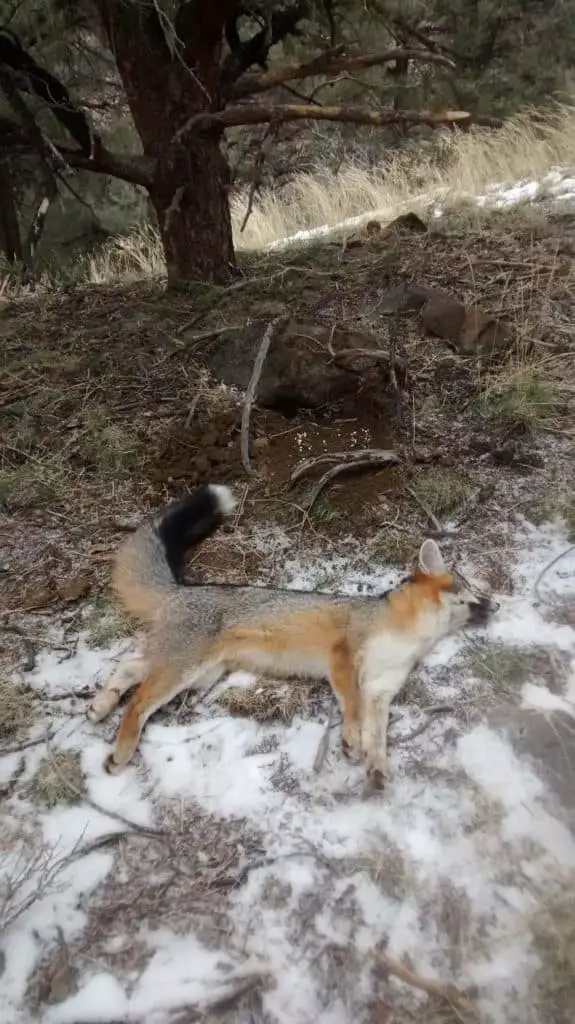
Stop calling when the fox is in sight.
Once you have spotted the red glow its eyes at night or detected the fox’s approach during the day, stop calling and wait for the fox to make the next move.
Trust me, the fox knows to within inches where the calls have come from. If it is hungry, your silence will not dissuade it from continuing its approach.
As the fox continues to move, keep your primos close by and low to the ground next to you. If at any point it changes direction away from you, give the build a short soft tap. This will cause the fox to stop moving, fix its eyes in your direction, and hopefully turn back toward you. Keep this up until the fox is comfortably in range and then take your shot.
How to call a fox that is moving away.
If the fox begins to move away from you and fails to turn back when you use a short, soft tap, immediately start another round of frantic bulb squeezes. Stop the moment it turns back toward you, but feel free to lay it on harder and faster if it continues to walk away.
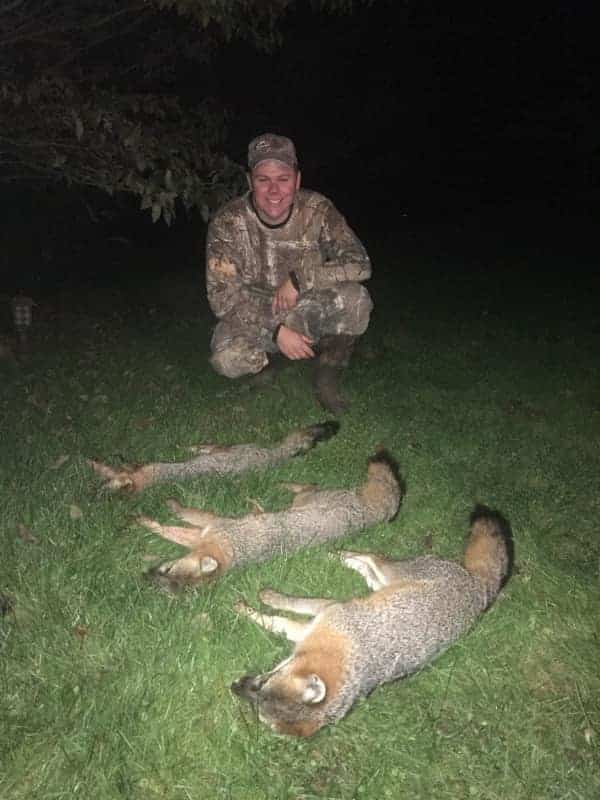
Secrets of the perfect fox hunting stand.
- Whenever possible, walk to your stand and call with the wind in your face.
- Scan for fox (when safe) as you approach your stand location. It’s always possible to “bump” a fox while walking in from your vehicle.
- A perfect stand is a quiet one. Softly close your vehicle’s door, walk slowly and silently to your stand, and avoid speaking above a whisper.
- Trust your mouse squeeze, practice with it, and you’ll call more fox with it than with the closed reed call. Unfortunately, a rabbit is a large animal for a fox, and it means a lengthy struggle.
- Put emotion in every call.
- If the winds are low (under five mph) and the barometer is rising, shut off the tv and get on the stand.
- Begin your hunt during the last two hours of daylight, and you will call more red foxes.
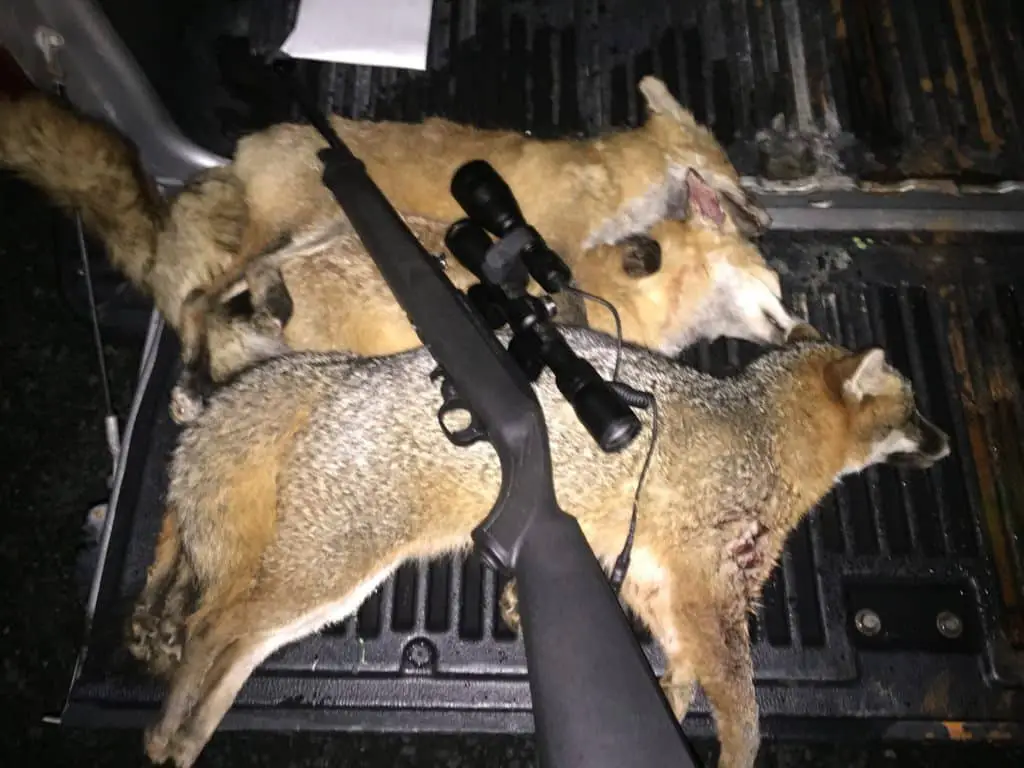
You are now ready to start your calling fox.
Grab a weapon, a light, and your callers, it’s time for you to get on your first stand. Good luck and let me know how you did.

